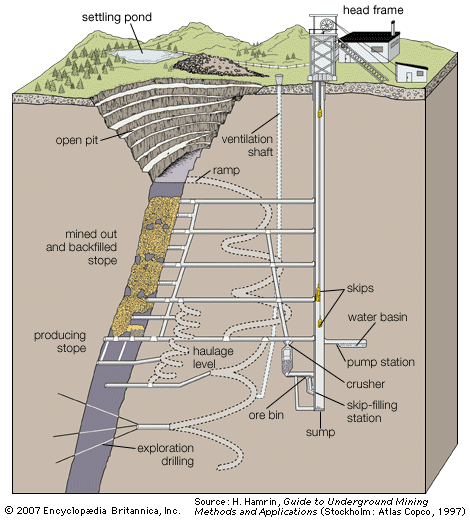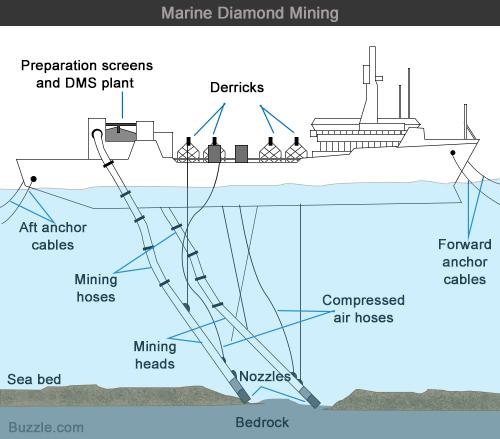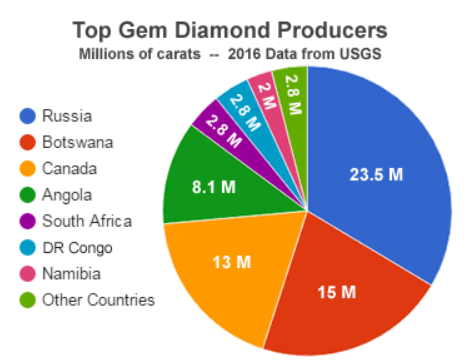- They arecomposed of carbon
- They burn when heated to bright red
- Their weight is measured in carat – 1 carat = 0.2 gram
- Diamonds were first discovered in India by Alexander the Great in 327 BC; then discovered in Brazil and described as “curious pebbles in 1725
The United States are the largest consumer of gem-quality diamonds in the world, but interestingly enough has no commercial mine production; the Crater of Diamonds State park in Arkansas is the only produce where the United States produces gem-quality diamonds. Tourists pay a fee to search and keep any diamond they stumble upon.
Diamonds form between 150-200 km below Earth’s surface with high temperatures ranging between 1050 and 1200 degrees Celsius and pressures between 45 and 55 kilo bars. The quality of diamonds is split in 4 categories: gem, near gem, industrial and boart.




Uses over history
- possibly used first as talisman or charm by prehistoric humans
- prized as gemstones in ancient Egypt, Babylon, Mesopotamia and India
- Exported to China by the Romans for cutting jade and drilling pearls
- Worn by royalty and the nobility as symbols of wealth
- Used to grind and shape hard metal alloys
- Thin diamond filled saw blades are used to slice metals and crystals for use in electronics
Issues with diamond mining
20% of of the world’s gem quality is produced by artisanal miners; workers usually include children. It is a strenuous and dangerous endeavor; diggers spend all day in stagnant water to find gems. Health conditions on site are bad and miners are often exploited and abused. The activity isn’t environmental friendly and because it isn’t controlled, fertile land is affected as topsoil is shoveled away. Rivers are diverted, destroying aquatic life and polluting water. Artisanal diamond mines sometimes operate in countries where the government doesn’t have the resources to monitor onsite activities and supply chains, thus operations can bypass legal and fiscal systems.
The Kimberley Process created in 2003 was put in place to enforce a global certification system for rough diamonds, in order to prevent conflict diamonds (which have fueled wars) from entering the legal trade; it concerns 81 countries and monitors the journey of rough diamonds from the mine to the market, ensuring the consumers that the products do not come from conflict zones. However it fails to address human rights and environmental violations. This poses the question as to what exactly is an ethical diamonds; do people who buy ethical diamonds only care about whether it comes from a conflict zone or not? and what is their definition of a conflict zone? Does a war-free zone automatically produce “ethical” diamonds, without engaging in child labor and torture, and is this something that customers care about? Should the KP process address this and should we change the definition of an ethical diamond?
